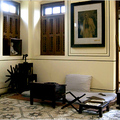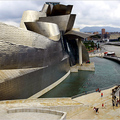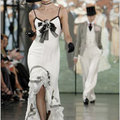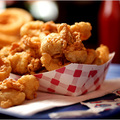IT was Thursday evening in Medellín and the open-air bars and cafes along fashionable Lleras Park were overflowing with after-work singles. At Triada, a stylish lounge with an orange neon bar and low-slung couches, laughter filled the subtropical air along with the deep-toned drumming of cumbia music. From around the corner, a small group of motorcyclists screeched by, their shiny engines puttering like machine guns. No one flinched, and the party kept rolling.
Not long ago, this scene would have been unthinkable in Medellín, once considered the most dangerous place on earth.
During the 1980s, Medellín, Colombia’s second largest city, was home to the drug lord Pablo Escobar, whose infamous cartel turned the city into a bloody battleground and the world’s cocaine capital. Gangs roamed the narrow streets, extortionists preyed on the city’s residents and narcotics traffickers staged attacks against police.
“You couldn’t step outside,” said Bibian Gomez, 28, a commercial real estate broker who sought refuge in the resort town of Cartagena at the height of the violence. “Whenever you saw a young guy on a motorcycle you thought that he was an assassin.”
But in the last decade, this city of two million, with its beautiful colonial architecture and year-round spring-like weather, has awakened from its drug nightmare. Mr. Escobar and his minions are gone and the cocaine trade has been largely dispersed. Bullet-riddled neighborhoods are coming to life with art museums and well-designed parks. And the constant rumble of construction — new shopping malls, flashy casinos and luxury hotels — can be heard throughout the city.
The renaissance is most noticeable in Santo Domingo Savio, a once impenetrable slum of tin-roofed shanties on a hillside in northern Medellín. Though pockets are still marred by a dilapidated jumble of crumbling cinderblocks and concrete stairs, it is now home to paved roads, colorful murals and the gleaming new Parque Biblioteca España. The hulking opal structure has a library, an auditorium, computer rooms, a day care center and an art gallery.
Getting there has gotten much easier, too. What once took an hour on a rickety bus, now takes 10 minutes, thanks to a shiny gondola that opened in 2004, part of a growing public transportation network that is uniting the city and making it more accessible, especially for the poor.
On a recent afternoon, Santo Domingo Savio exuded the easygoing revelry of a small state fair. There were uniformed school children jumping rope, elderly men selling fresh slices of mango, and young couples strolling hand in hand admiring the views of the city below — a landscape of verdant pastures crowned by scattered high-rises and restored 19th-century buildings.
These days, the view also includes construction cranes, largely because of Medellín’s iconoclast mayor, Sergio Fajardo, who has commissioned renowned Colombian architects like Giancarlo Mazzanti and Felipe Uribe to construct libraries and innovative parks in neglected neighborhoods.
The centerpiece is Explora Park, a 398,000-square-foot science and technology park in the northeastern end of town that will be home to one of South America’s largest aquariums when it opens partially in late October. A block south is the sleek Wishes Park, an oasis of concrete floors and polished cherry-wood tables, with a planetarium and a music hall where the Medellín Philharmonic rehearses. Movies are shown outdoors there.
Other education-minded parks, all situated along the improved Metro system, include the Zen-themed Barefoot Park, which invites visitors to walk through a bamboo forest and then dip their feet in cascading water fountains; and the Park of Lights, which resembles a giant birthday cake when all 300 of its 72-foot-tall columns are illuminated at night.
Art has also flourished, led by a native-son, Fernando Botero, frequently referred to as Latin America’s most important living artist. In 2000, he donated 137 of his works to the Museum of Antioquia (Carrera 52 No. 52-43, 57-4-251-3636; www.museodeantioquia.org), including a painting that depicts a pudgy Pablo Escobar toppled by bullets.
But Medellín’s transformation may be most apparent at night. During the cocaine days, those who ventured onto the city’s lifeless, grid-like streets after hours encountered a Wild West showdown of trigger-happy capos. Now, cafes and bars spill onto the sidewalks, lending a festive and carefree vibe to the balmy evenings. Sprawling nightclubs draw thousands with thumping Latin music that keeps the young crowd dancing until dawn.
On a recent Thursday night at the popular Mango’s (Carrera 42 No. 67A-151; 57-4-277-6123), a ranch-style disco with cowboy memorabilia and waiters dressed to match, an eagerly anticipated three-day weekend was about to turn into a four-day party. A cluster of young clubgoers ordered rum-and-coke cocktails as the rhythms of reggaetón and vallenato shook the foggy dance floor.
It was 3 a.m. but you couldn’t tell by the crowd’s infectious energy. They were clearly in it for the long haul, as if making up for lost time.


 Paul Smith for The New York Times
Paul Smith for The New York Times 



